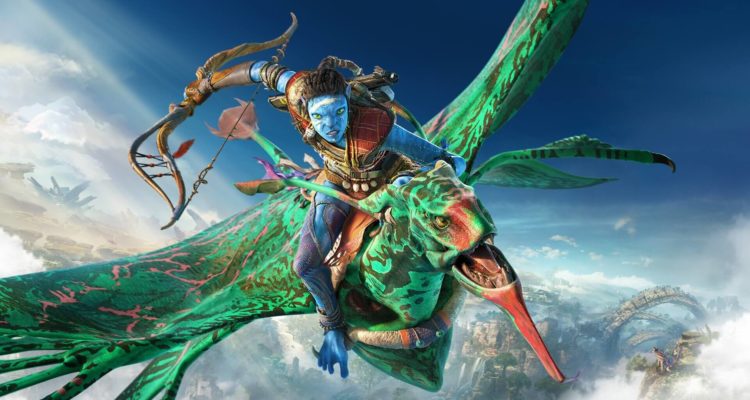Back in 2009, my friends and I went to see James Cameron’s Avatar in theatres. That was the only time I watched said movie. What I remember from it is that it was more of a 3D spectacle, which helped to popularize 3D moviegoing, but kind of derivative and just OK otherwise. Either way, the movie never clicked with me, and I’ve never had interest in watching it again. As such, I was surprised and underwhelmed when news of sequels came out, though I recently borrowed the second movie from the library and watched it over the course of one early morning. Like its predecessor, it was alright but unspectacular.
Around the same time as the first movie released, a tie-in video game came out for Xbox 360, PS3, Wii, DS and PC. Due to my limited interest in the subject matter, and hearing not-so-good things, I passed on said title and never played it. From what I’ve heard, I didn’t miss much.
Fast forward to this December where, months after Avatar: The Way of Water left theatres and made its way to Blu-ray disc, Ubisoft has released a new tie-in video game. They call it Avatar: Frontiers of Pandora and, while it doesn’t follow the story of the movie, it complements it.
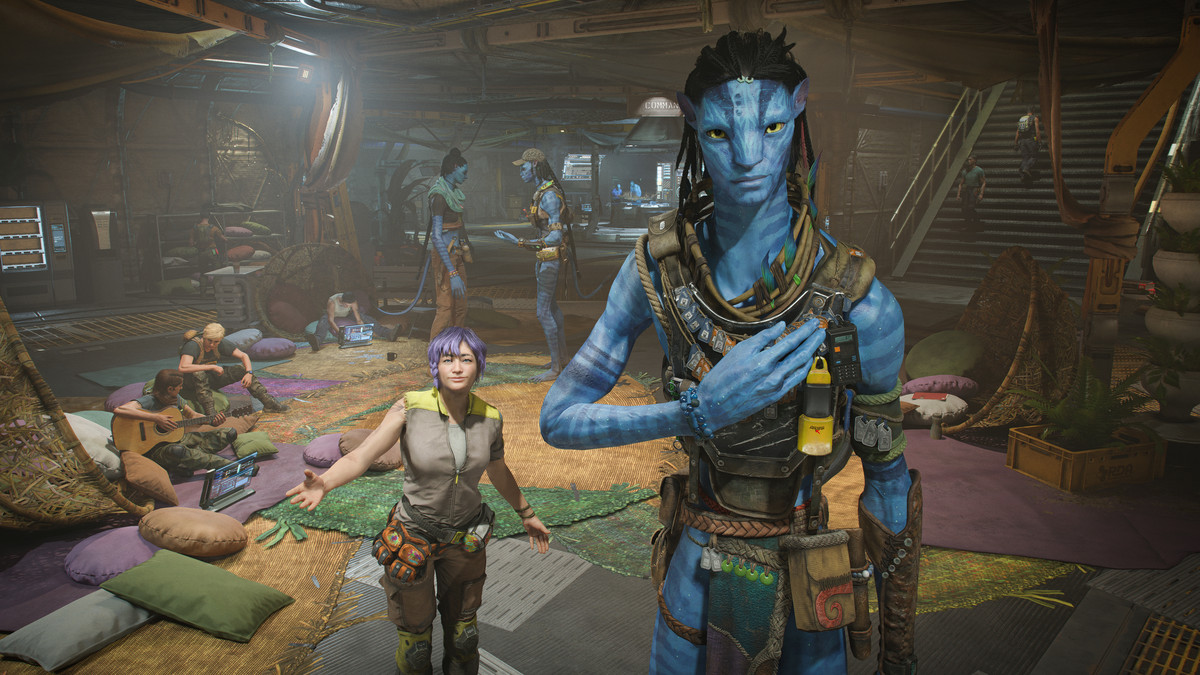
Despite not being a big fan of the movies, I went into Frontiers of Pandora with an open mind. After all, I’ve always enjoyed Ubisoft’s games, and while others online criticize their formula, I’ve always found it addictive. I love exploring open worlds, completing side quests and doing everything Far Cry offers. As such, those games have been personal favourites since I first played one on the original Xbox. Unfortunately, this latest Avatar game has failed to scratch that itch, although it’s not bad by any means.
Avatar: Frontiers of Pandora is an open world, first-person game with first-person shooter elements. It begins inside of a drab, metallic and gray building somewhere in Pandora, in which the evil humans (the RDA) have set up a residential school for the planet’s Na’vi youth. By that, I mean that they’ve slaughtered a tribe and taken its youth to be schooled and brainwashed in the human way. This is the RDA’s idea of how to colonize and fix the strange planet.
After some shit hits the fan, our customizable player character’s vocal sibling is gunned down by the leader of this ‘school;’ a jerk known as Mercer. What follows is a dangerous escape through the building and its narrow vents, before the player meets up with a mix of human and Na’vi resistance. This is their first glimpse of, and time spent within, their natural home planet.
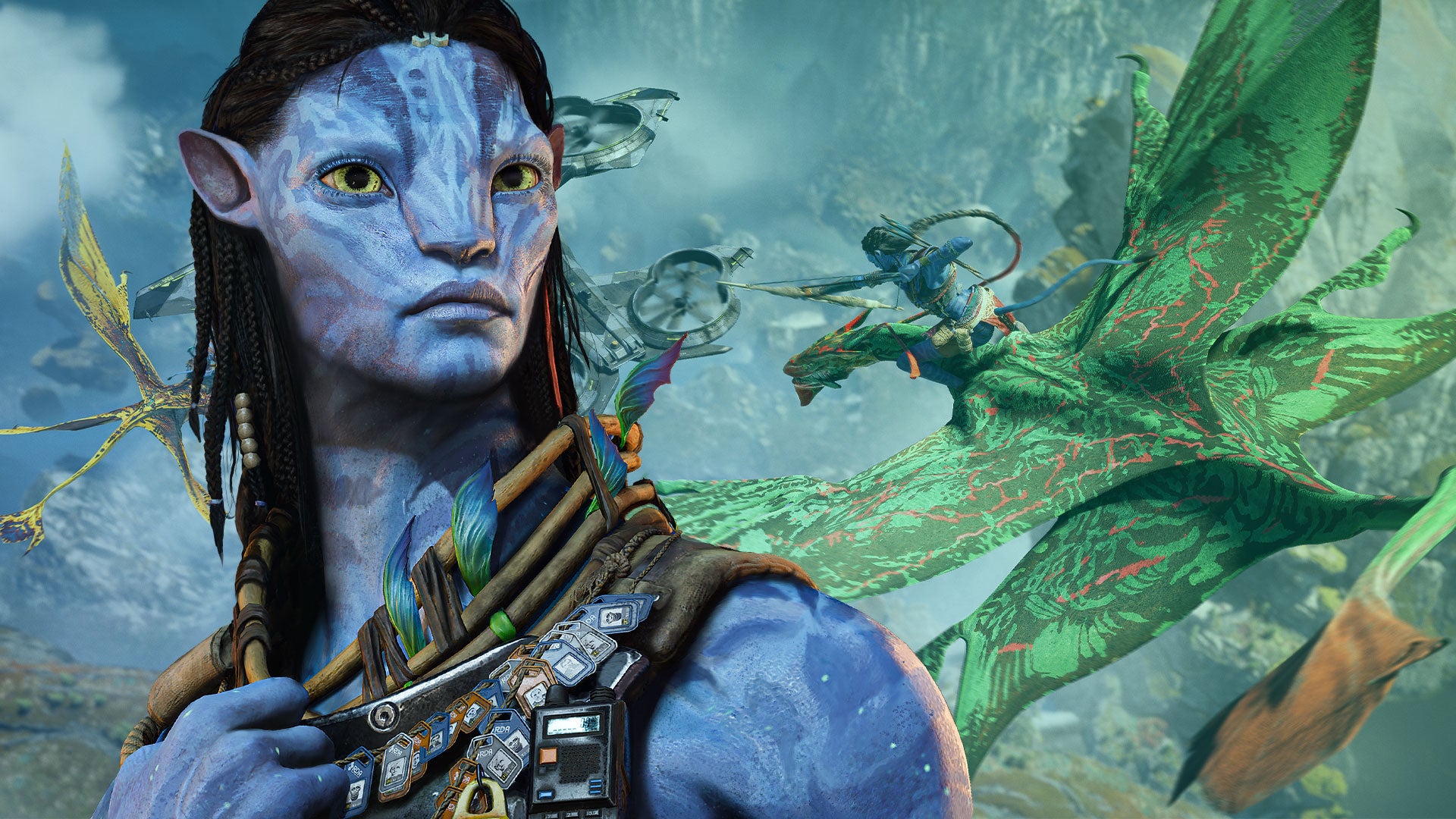
What follows is a campaign that many say is blue skinned Far Cry, but never hooked me in that way. I mean, by all accounts, I should have loved this game because I adore Far Cry, but I’ve struggled to find motivation to keep playing it.
First things first, the world of Pandora is lush and beautiful, with different biomes representing things like jungle and plains. The former is full of colourful plants, rivers and trees, no matter where you look; so much so that it can be a bit overwhelming. Meanwhile, the latter is vast and expansive, but more empty.
As you explore the planet, and deal with the resistance, you’ll take on different quests involving helping others and trying to take on the RDA, which is polluting Pandora with its toxin spewing plants. These will come in the form of main, side and community quests; the latter of which involve finding plants or materials and sharing them with the tribes you encounter. In fact, the latter type takes up too much time in this game.
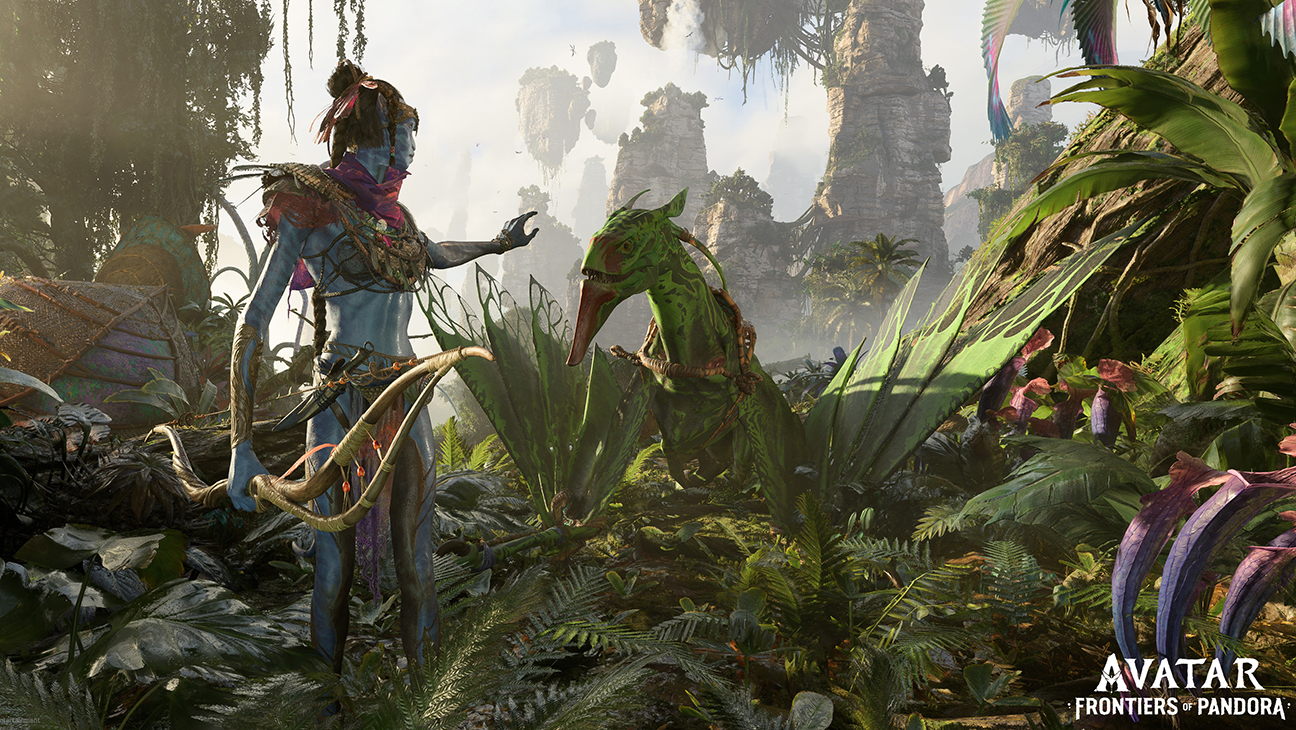
Being someone who’s played video games for over thirty years, and has thoroughly completed many games like this (including all Far Cry titles at least once), I went about trying to complete every quest. In doing so, I expected to level up and be able to take on added challenges. Avatar: Frontiers of Pandora doesn’t work that way, though, making it different from Far Cry and other Ubisoft games.
I must have misread or missed something early on, but I later discovered that this game is based more on gear and crafting than it is anything else. This was disappointing to me, as someone who doesn’t find crafting of interest. I got to the point where my character was too under-levelled to take on the next story mission, which was 5 levels ahead, and had to focus on searching the map for different materials for use in crafting. Doing most of the available quests didn’t raise my level.
One of the problems with this is that the world of Pandora is massive, and that its jungle biome is simply littered with colourful alien plants and animals. It’s so busy that it can be difficult to discern which plants are special, and which are nothing important, not to mention which ones will randomly hurt you. Thus, one must press a trigger button to instigate a special view, which highlights special flowers and shows a blue glow where you’re supposed to go, provided you have guided mode on (as opposed to the more vague exploration setting). This results in a game that is visually pretty, but also overwhelming for the eyes, with too much going on at once when inside the jungle.
Despite all the plants, which glow in the dark at night, the map feels empty because there isn’t a lot going on. You’ll find industrial plants, survey buildings (where you must use a hacking device to turn on the power) and Na’Vi outposts, but a lot of the map is just wilderness. You’ll find yourself doing a lot of walking or running through similar looking environments as a result; at least until you get the flying Ikran mount, though it isn’t available at all times. Later on, you’ll also get a horse-like mount, and it’s odd that you get that after the flying one.
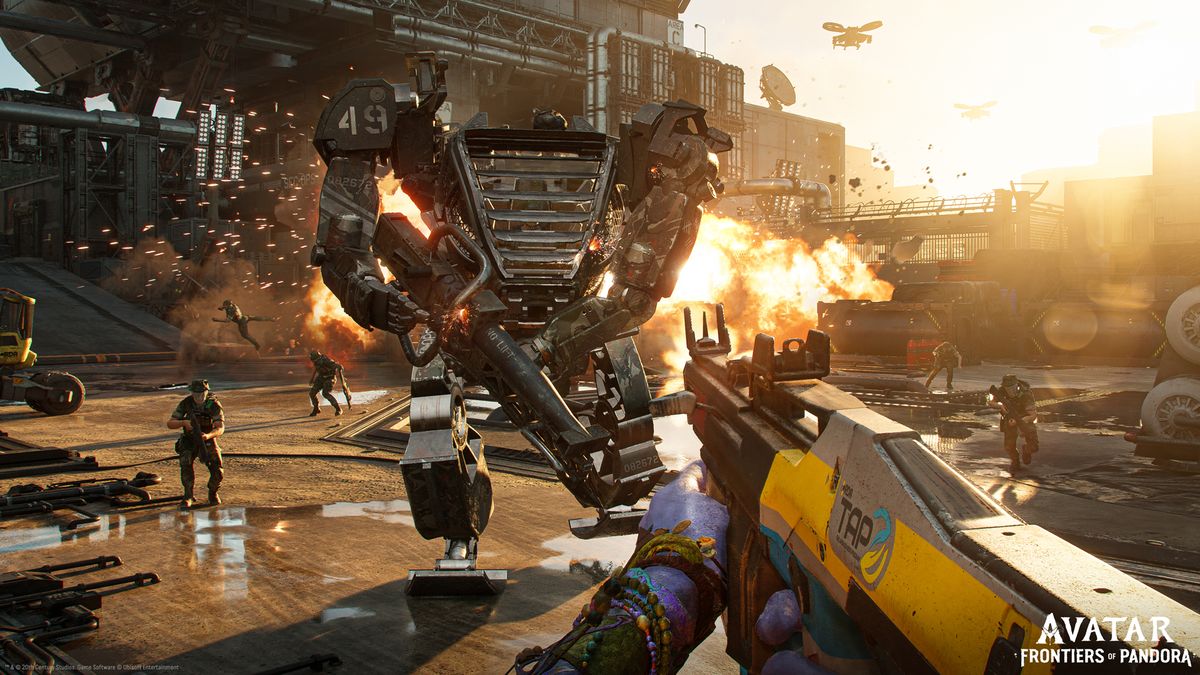
It’s possible to hunt and harvest animals, not to mention the plants noted above, and use them for cooking. This is a new mechanic, which isn’t well introduced and can be a bit confusing, as you’re to eat food so that you have energy, which depletes over time. If you don’t have energy, you can’t regenerate health, but can still heal using limited healing plants. You can hold a few at a time, and can harvest more at any time, provided you actually find the plants. They’re often near water, while enemy outposts are not.
You’ll also find yourself picking up lots of sticks, for use in crafting arrows. Arrows will often be your most used weaponry, with two different types of bows on offer, and they can even be used to take out RDA mechs. In addition to this, you’ll also find an assault rifle, and maybe even a shotgun, but ammo is more limited.
There’s not as much combat here as there is in a Far Cry game, and it’s honestly not as good. I didn’t necessarily look forward to the combat. Stealth is a good way to go, but it’s difficult to do, as enemies are alerted easily even if you attempt to dispatch them quietly. Then, when they are alerted, they tend to have pretty perfect aim.
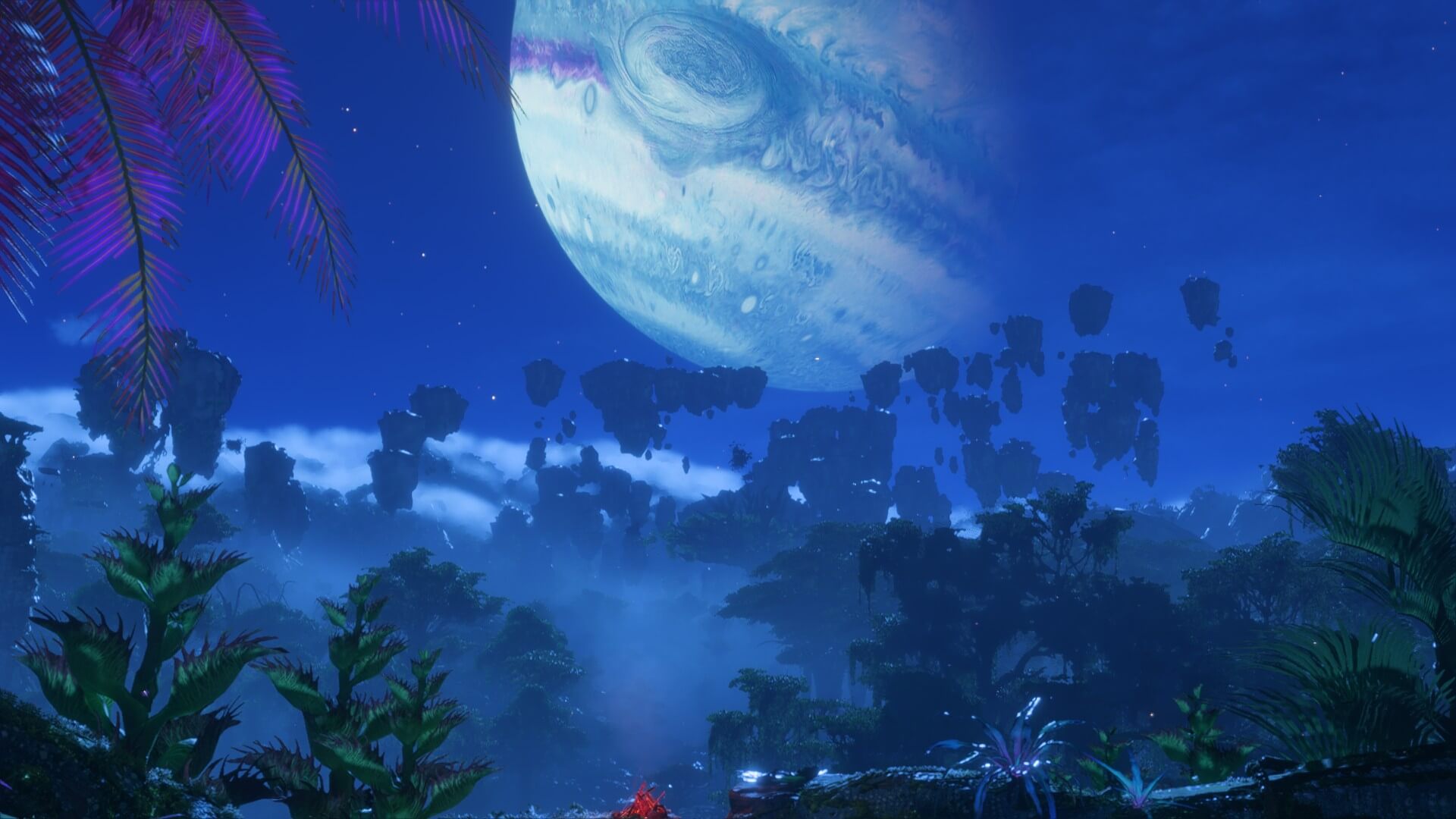
Make sure to do what I didn’t, and keep up with crafting, because you’ll otherwise reach a point where it takes over 20 arrows to down one mech. This makes things difficult when you’re forced into a cave and have limited cover. I just didn’t find the crafting mechanics all that interesting.
Of course, you could also play co-op and beat the game with another person. That’s an option.
Story-wise, Avatar: Frontiers of Pandora isn’t all that memorable. It’s very one note, with the blue guys good and humans bad motif running throughout the game. There’s not much depth to it, and the characters just aren’t that interesting. You’ll meet quite a few, but none are memorable.
As mentioned above, though, this is a beautiful game. There’s tons of foliage, and lots of visceral content to gawk at. It’s also quite colourful and detailed. Unfortunately, though, the current build suffers from some occasional, momentary pausing and frame rate slowdown. Hopefully that’ll be fixed soon.
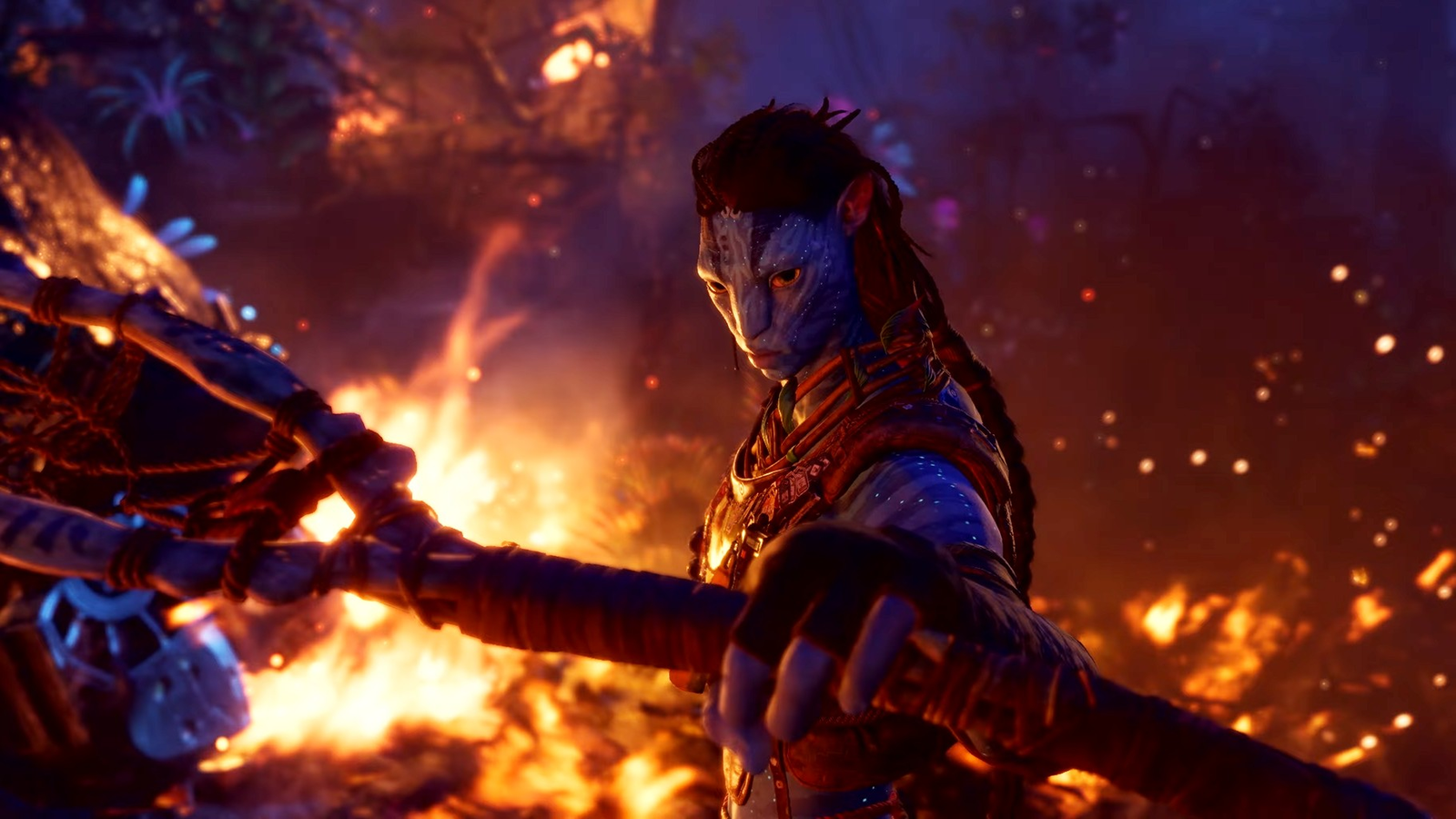
That said, it’s still one of the better looking games out there.
The sound is also very immersive, but the voice acting leaves something to be desired along with the writing. It goes without saying, but some of the voice actors are (a lot) better than others.
At the end of the day, Avatar: Frontiers of Pandora is a game that is nice to look at, but not as fun to play. Its gameplay is unfortunately middling, and its quest design leaves you wanting. It isn’t helped by frustrating combat and weird/poor progression mechanics that aren’t relayed to the player very well.
Like the movies, it’s more style than substance.
This review is based on the Xbox Series version of the game, which we were provided with.

